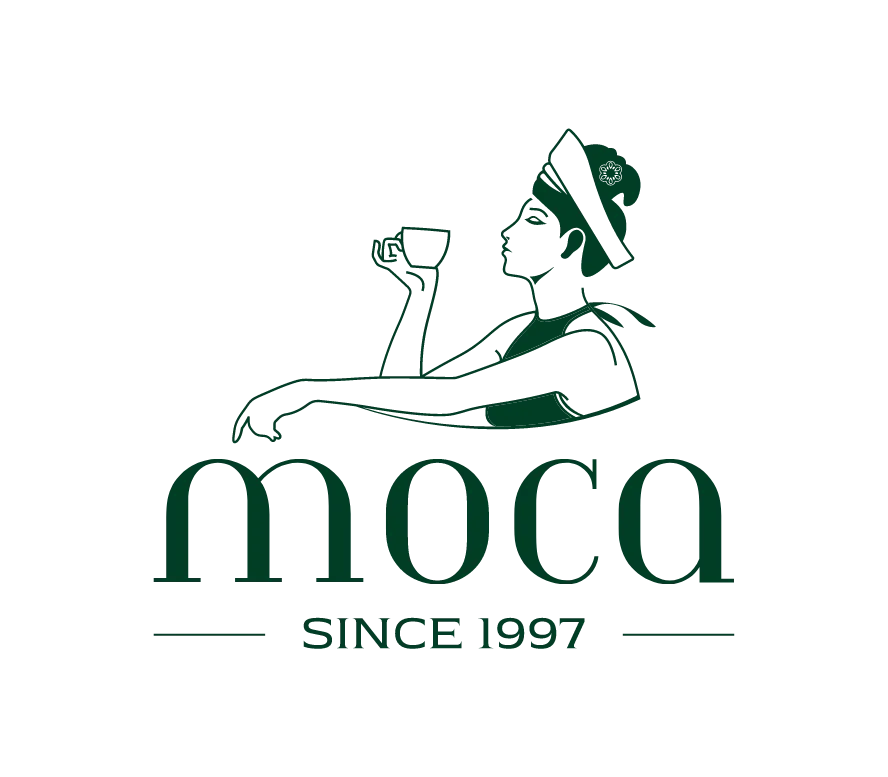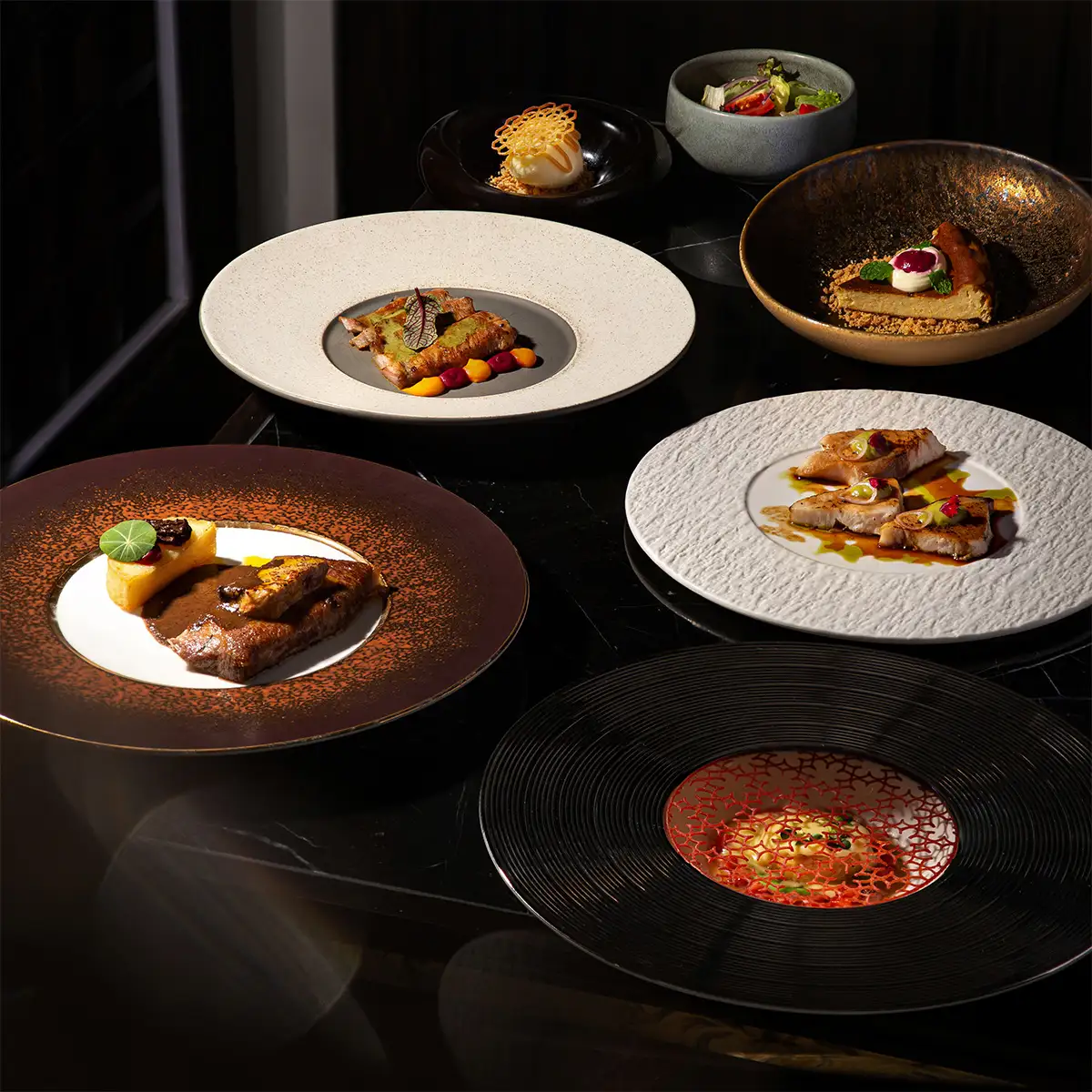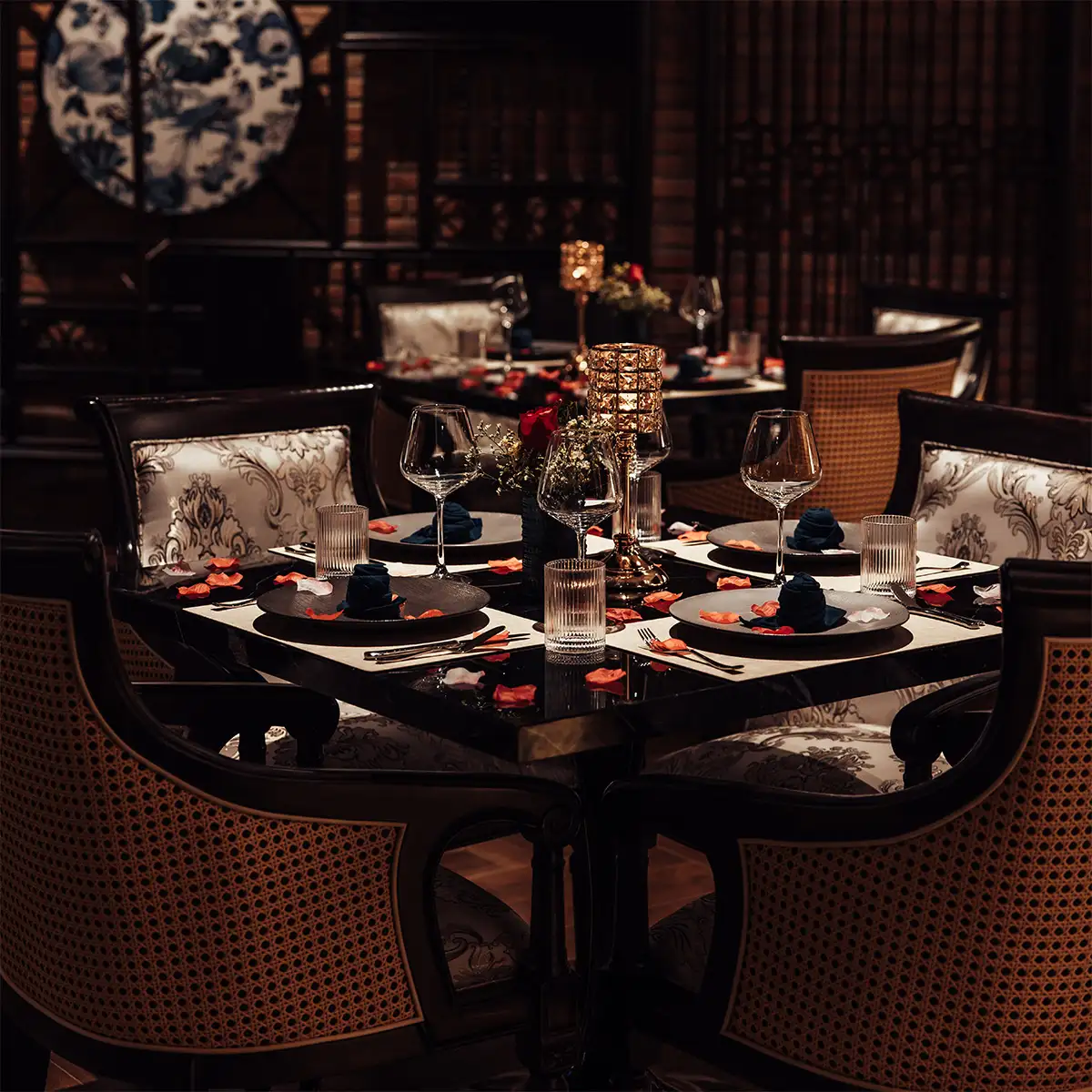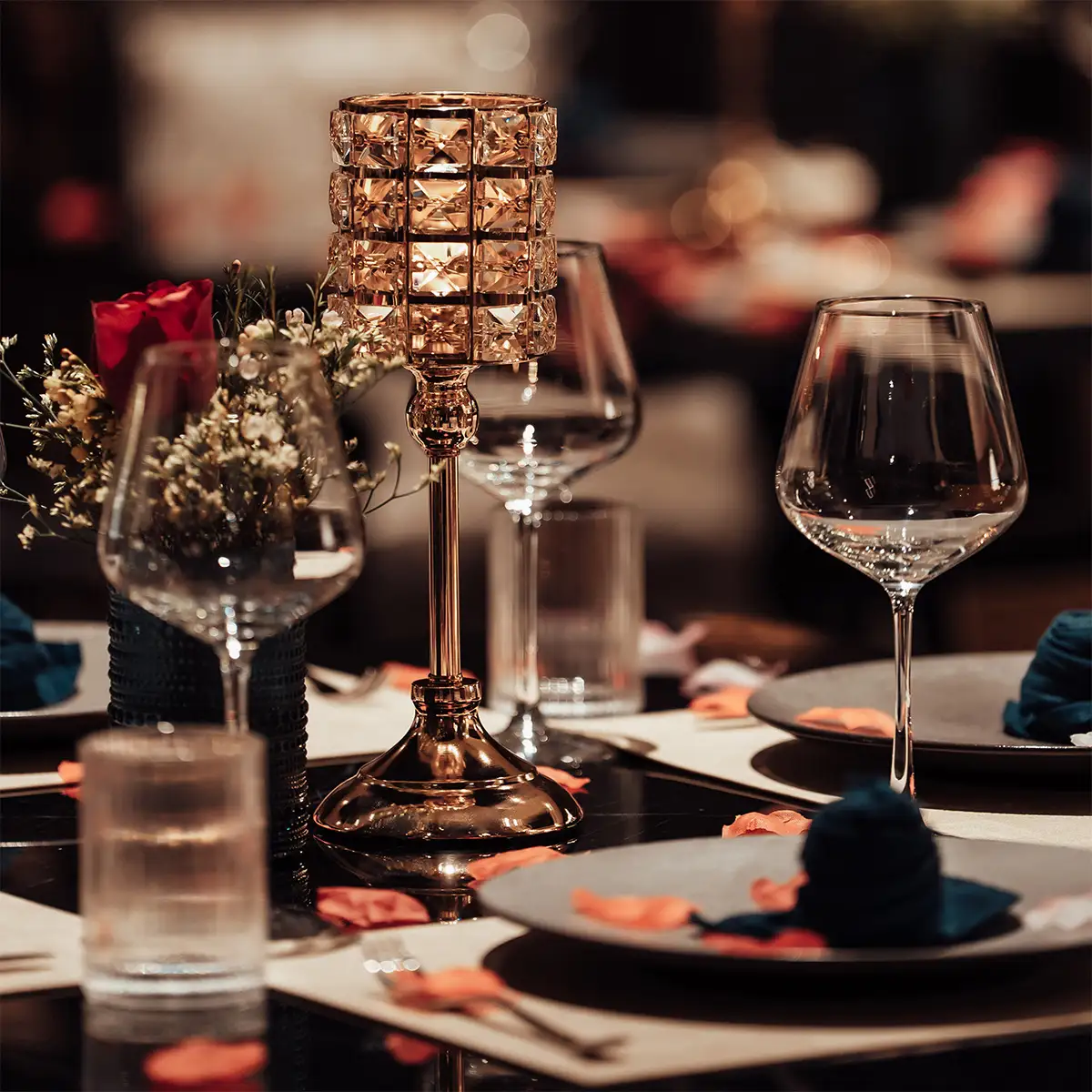Dining at a Michelin-starred restaurant is a rare and refined experience, where every detail—from the ambiance to the artistry of each dish—is carefully orchestrated. To truly honor this level of excellence, diners should embrace proper Michelin star restaurant etiquette. This guide offers key insights into the essential dos and don’ts, helping you navigate the experience with grace and respect, while deepening your appreciation for the culinary mastery on display.
1. Pre-Arrival protocol: setting the stage for success
The Michelin star restaurant etiquette experience begins long before you step through the restaurant doors. Thoughtful preparation ensures a smoother, more enjoyable evening for everyone involved.
Reservations: Planning ahead is key
Securing a table at a Michelin star restaurant often requires significant advance planning. These establishments are highly sought-after, and reservations can fill up weeks or even months in advance.
- The importance of booking well in advance: To avoid disappointment, make your reservation as early as possible. Popular times, such as weekends or holidays, are particularly competitive.
- Confirming reservations and promptly communicating any changes: Always confirm your reservation a day or two beforehand. If your plans change, notify the restaurant immediately. This allows them to offer the table to other patrons and avoids potential no-show fees. Clear communication demonstrates respect for the restaurant's time and resources, a key aspect of Michelin star restaurant etiquette.
- Mentioning dietary restrictions or allergies during the reservation process: Inform the restaurant of any dietary restrictions, allergies, or special needs when making your reservation. This allows the chef and staff to prepare accordingly and ensure you have a safe and enjoyable meal. Many high-end restaurants are adept at accommodating various dietary needs, but advance notice is crucial.
Decoding the dress code: Dressing the part
Michelin star restaurants often have specific dress codes to maintain a certain ambiance. Understanding and adhering to these guidelines is a fundamental aspect of Michelin star restaurant etiquette.
- Understanding the restaurant's dress code: Research the restaurant's dress code before your visit. Common terms include "business casual," "smart casual," and "formal attire." If the dress code is unclear, it's always best to err on the side of formality.
- Avoiding overly casual attire and erring on the side of formality: Avoid wearing overly casual clothing such as t-shirts, shorts, or athletic wear. Opt for dress pants or a skirt, a collared shirt or blouse, and dress shoes. A jacket may be appropriate depending on the dress code.
- Elegance and respect: As the Placement International blog notes, plating techniques emphasize elegance. Similarly, dressing appropriately shows respect for the establishment, the chef's artistry, and your fellow diners. Adhering to the dress code is a visual demonstration of your understanding of Michelin star restaurant etiquette.
Menu Preview: A glimpse of the culinary journey
Familiarizing yourself with the menu beforehand allows you to anticipate the dining experience and make informed choices.
- Familiarizing oneself with the menu and pricing beforehand: Most Michelin star restaurants post their menus online. Reviewing the menu allows you to understand the chef's style, identify dishes that appeal to you, and be aware of the price range.
- Considering the tasting menu versus a la carte options: Many Michelin-rated restaurants offer both a tasting menu (a multi-course, fixed-price meal showcasing the chef's signature dishes) and an à la carte menu (where you select individual dishes). Consider which option best suits your preferences and budget. The tasting menu offers a comprehensive experience, while à la carte allows for more customization. Choosing the right option is part of practicing good Michelin star restaurant etiquette, ensuring you enjoy the meal to the fullest.
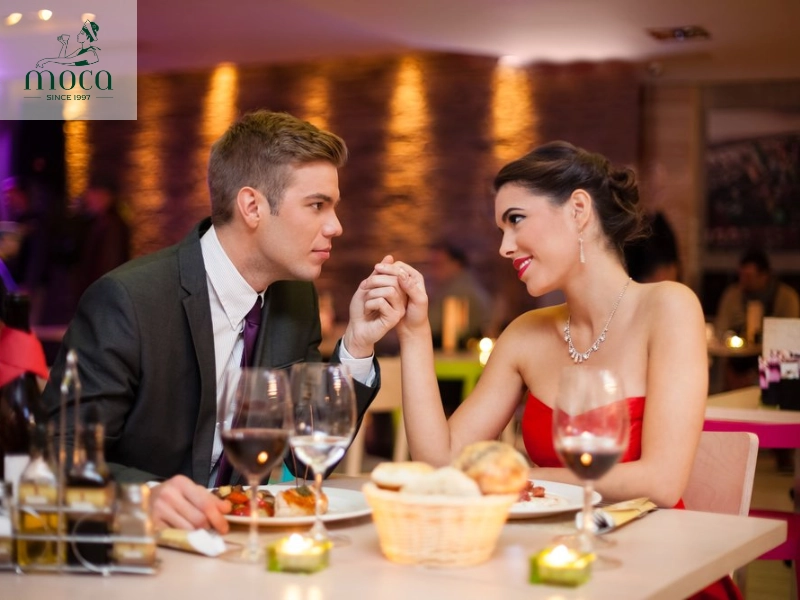
Michelin dining begins before arrival — from securing reservations and respecting dress codes to previewing the menu, preparation sets the stage for an unforgettable experience.
2. Arrival and initial interactions: Graceful entrance
Your arrival at a Michelin star restaurant is an opportunity to make a positive first impression. Demonstrating grace and respect from the moment you enter sets the tone for a memorable dining experience and showcases your understanding of Michelin star restaurant etiquette.
Punctuality: Respecting time
Time is a precious commodity, and arriving on time demonstrates respect for the restaurant's schedule and the other diners.
- Arriving on time for the reservation: Aim to arrive at the restaurant a few minutes before your scheduled reservation time. This allows you to check in, freshen up, and settle in without feeling rushed.
- Communicating any delays to the restaurant: Unforeseen circumstances can sometimes cause delays. If you anticipate being late, call the restaurant as soon as possible to inform them. Many restaurants will hold your table for a limited time, but communication is key. Failing to notify the restaurant of a significant delay is a breach of Michelin star restaurant etiquette.
Greeting and seating: Following the lead
The initial interaction with the restaurant staff is an important part of the Michelin star restaurant etiquette experience.
- Politely greeting the host or hostess: Upon arrival, approach the host or hostess with a polite greeting, such as "Good evening" or "Hello." Provide your name and reservation time.
- Allowing the staff to guide you to your table: The staff will escort you to your table. Follow their lead and avoid wandering around the restaurant on your own.
- Waiting for all members of the party to be seated before sitting: Wait until all members of your party have arrived and been seated before taking your seat. This shows consideration for your companions and allows the staff to ensure everyone is comfortable. This simple act is a sign of good Michelin star restaurant etiquette.
Coat check: A touch of formality
Many Michelin star restaurants offer a coat check service, particularly during colder months.
- Utilizing the coat check when available: If a coat check is available, utilize it. This helps to keep the dining area uncluttered and ensures your coat is safely stored. Furthermore, using the coat check is a subtle way of demonstrating your familiarity with Michelin star restaurant etiquette and the expectations of a fine dining establishment.
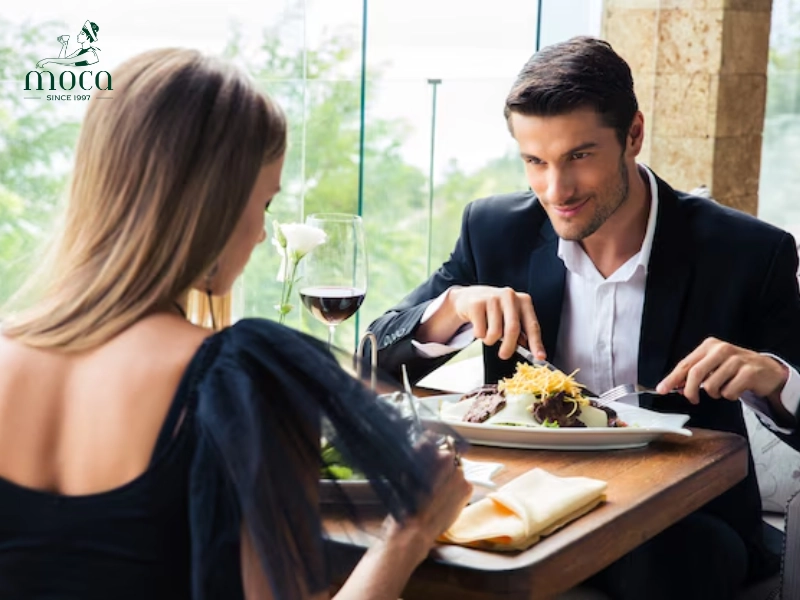
A graceful arrival — punctuality, politeness, and attentiveness to etiquette set the tone for a refined Michelin star dining experience.
Learn more: Understanding 2-Michelin-Starred Restaurants
3. Table manners and dining decorum: Navigating the meal with poise
Once seated, your table manners and overall demeanor contribute significantly to the dining experience, both for yourself and for those around you. Impeccable table manners are a cornerstone of Michelin star restaurant etiquette, demonstrating respect for the setting and the culinary artistry on display.
Napkin etiquette: A silent signal
The humble napkin is a powerful tool for communicating your understanding of fine dining protocol.
- Placing the napkin on the lap upon being seated: As soon as you are seated, unfold your napkin and place it on your lap. This signals that you are ready to begin the meal.
- Using the napkin to blot, not wipe: Use the napkin to gently blot your mouth, rather than wiping vigorously. This is a more refined and discreet way to maintain cleanliness.
- Place the napkin on the chair when leaving temporarily and on the table at the end of the meal: If you need to leave the table temporarily, place your napkin on your chair. This indicates that you will be returning. At the end of the meal, place the napkin loosely on the table to the left of your plate. This signals that you have finished eating. Proper napkin etiquette is an essential element of Michelin star restaurant etiquette.
Utensil usage: A symphony of silverware
The array of silverware at a Michelin star restaurant can seem daunting, but understanding the basic principles makes navigating the courses much easier.
- Starting with the outermost utensils and working inward with each course: The general rule is to start with the outermost utensils and work your way inward with each course. The utensils are arranged in the order they will be used.
- Avoiding using personal utensils for shared dishes: When sharing dishes, use the serving utensils provided, rather than your personal utensils. This prevents the spread of germs and is considered polite.
- Requesting replacements for dropped utensils: If you drop a utensil, don't pick it up. Politely ask your server for a replacement. Trying to retrieve a dropped utensil yourself can be disruptive and is not in line with Michelin star restaurant etiquette.
Conversation and demeanor: Maintaining a refined atmosphere
Your conversation and overall demeanor contribute to the ambiance of the restaurant.
- Chewing with your mouth closed: This is a fundamental rule of etiquette and applies particularly in a fine dining setting.
- Avoiding talking with your mouth full: Wait until you have swallowed your food before speaking.
- Keeping elbows off the table: While this rule is sometimes relaxed, it's generally considered more formal to keep your elbows off the table between courses.
- Minimizing phone usage: Refrain from using your phone at the table, unless absolutely necessary. If you must take a call, excuse yourself from the table. Excessive phone usage is disruptive and disrespectful and goes against Michelin star restaurant etiquette.
Engaging with the staff: Courtesy and appreciation
The staff at a Michelin star restaurant are dedicated to providing exceptional service. Showing them courtesy and appreciation is an important part of the dining experience.
- Being polite and respectful to servers, sommeliers, and other staff: Treat all members of the staff with politeness and respect. They are there to assist you and enhance your dining experience.
- Asking thoughtful questions about the menu or wine list: Don't hesitate to ask questions about the menu or wine list. The staff are knowledgeable and happy to provide recommendations. Engaging with the staff demonstrates your interest in the food and wine and is a sign of good Michelin star restaurant etiquette.
- Expressing appreciation for the food and service: At the end of each course, and at the end of the meal, express your appreciation for the food and service. A simple "Thank you" goes a long way. Showing gratitude is a key component of Michelin star restaurant etiquette.
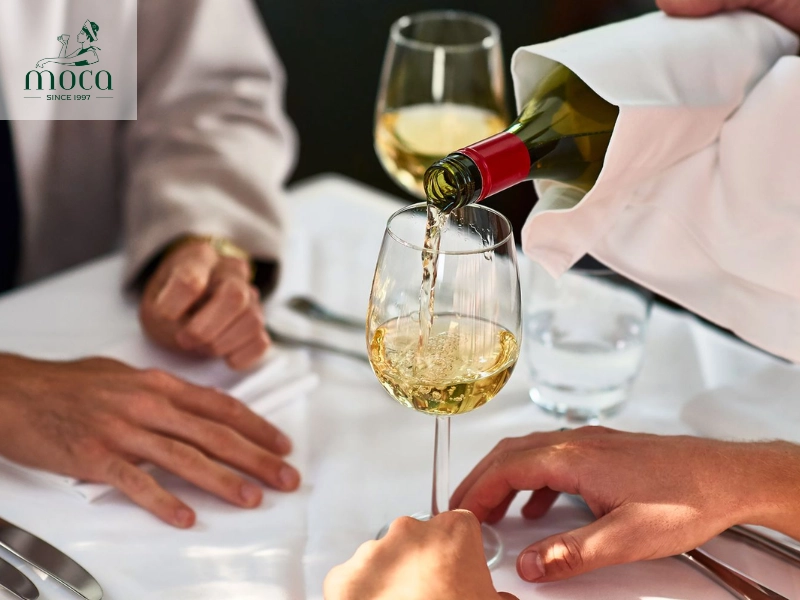
At the table, grace and respect shine through—refined manners, thoughtful conversation, and appreciation for service define the Michelin star dining experience.
4. Ordering and savoring: A culinary exploration
The ordering and savoring of your meal is where the true culinary journey unfolds. Approaching this part of the experience with an open mind and a willingness to engage with the food and wine is crucial for a memorable and respectful Michelin star restaurant etiquette experience.
Wine selection: Seeking expert guidance
Wine plays a significant role in complementing the flavors of the food.
- Consulting the sommelier for wine pairings: A sommelier is a wine expert who can guide you in selecting the perfect wine to accompany your meal. Don't hesitate to consult with them for recommendations. Their expertise is invaluable in enhancing your dining experience and demonstrating your commitment to Michelin star restaurant etiquette.
- Asking for recommendations when unsure: If you're unsure about which wine to choose, ask the sommelier for recommendations based on your preferences and the dishes you've ordered. They can suggest wines that will complement the flavors and elevate the overall experience.
Tasting Menu or a la carte: Choosing your adventure
The choice between the tasting menu and à la carte options depends on your preferences and desired level of culinary exploration.
- Considering the tasting menu for a comprehensive experience: The tasting menu offers a curated selection of the chef's signature dishes, providing a comprehensive overview of their culinary style. It's a great option for those who want to fully immerse themselves in the Michelin star experience.
- Selecting complementary dishes when ordering a la carte: If you choose to order à la carte, select dishes that complement each other in terms of flavor and texture. The server can provide guidance on pairing dishes. Thoughtful selection contributes to a more harmonious and enjoyable meal, reflecting your understanding of Michelin star restaurant etiquette.
Pacing and savoring: Appreciating the artistry
Michelin star dining is not just about eating; it's about appreciating the artistry and craftsmanship that goes into each dish.
- Savoring each course and enjoying the dining experience: Take your time to savor each course and appreciate the flavors, textures, and presentation. Avoid rushing through the meal.
- A sensory experience: As the Placement International blog emphasizes in its discussion of plating, dining is a multi-sensory experience. Engage all your senses – sight, smell, taste, and even sound – to fully appreciate the culinary artistry. The aroma of the dish, the visual presentation, and the subtle nuances of flavor all contribute to the overall experience. Paying attention to these details is a key aspect of Michelin star restaurant etiquette, allowing you to fully appreciate the chef's vision.
Handling unfamiliar dishes: Embracing the unknown
Michelin star restaurants often feature innovative and unfamiliar dishes.
- Being open to trying new things: Be open to trying new things and expanding your culinary horizons. This is an opportunity to discover new flavors and textures.
- Asking the server for guidance on how to eat unfamiliar dishes: If you're unsure how to eat a particular dish, don't hesitate to ask your server for guidance. They can provide instructions on the proper technique and ensure you enjoy the dish to its fullest potential. Asking for clarification demonstrates your respect for the cuisine and your commitment to proper Michelin star restaurant etiquette.
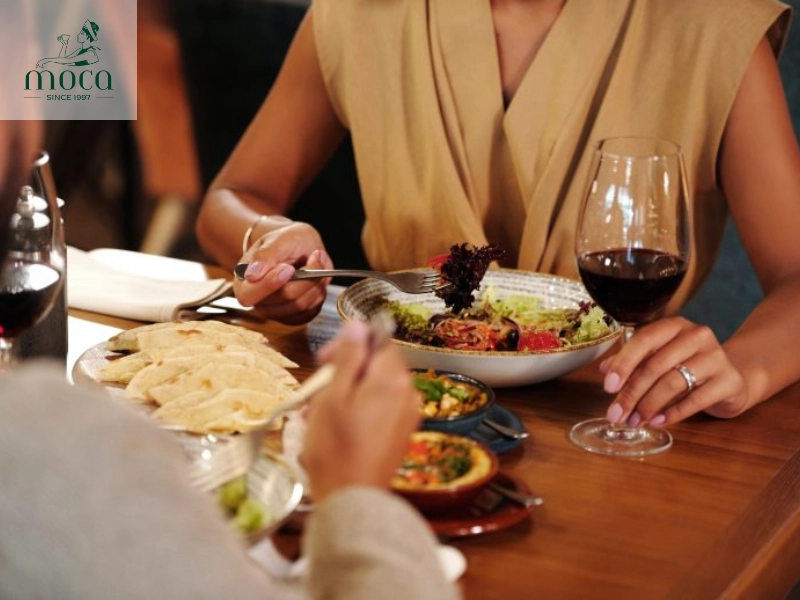
Ordering and savoring with intention—consulting the sommelier, embracing new flavors, and appreciating every detail defines the Michelin star dining journey.
Learn more: Michelin Restaurants in Hanoi: A Guide to Exquisite Dining Experiences
5. Post-meal courtesies: A gracious farewell
The conclusion of your meal is just as important as the beginning. Demonstrating graciousness and appreciation as you depart leaves a lasting positive impression and reinforces your understanding of Michelin star restaurant etiquette.
Expressing gratitude: A token of appreciation
Showing gratitude to the staff is a simple yet powerful way to acknowledge their efforts in creating a memorable dining experience.
- Thanking the server for their service: Express your sincere thanks to your server for their attentiveness and service throughout the meal. A genuine "Thank you" is always appreciated.
- Understanding tipping customs (If applicable): Familiarize yourself with the tipping customs in the country or region where the restaurant is located. Tipping is a customary way to show appreciation for good service in many cultures. Ensure you understand the appropriate percentage to tip and factor it into your budget. While tipping customs vary, understanding and adhering to them is a crucial aspect of Michelin star restaurant etiquette.
Departure: Leaving with grace
Your departure should be as seamless and elegant as your arrival.
- Pushing in your chair upon leaving the table: Push in your chair as you leave the table. This small gesture shows consideration for the staff and other diners.
- Collecting belongings and thanking the staff on the way out: Collect your belongings and thank the host or hostess and any other staff members you encounter on your way out. A final expression of gratitude reinforces your appreciation for the entire experience and solidifies your adherence to Michelin star restaurant etiquette.
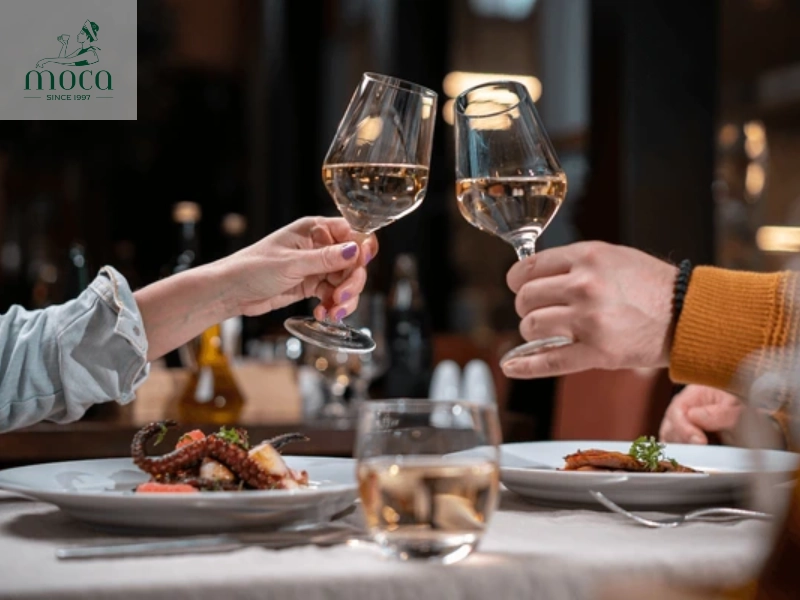
A gracious farewell — expressing gratitude, observing local tipping customs, and departing with elegance are the final touches of Michelin star dining etiquette.
In conclusion, Michelin star restaurant etiquette goes beyond knowing table manners—it's about showing genuine respect for the chef’s artistry, the staff’s dedication, and the overall experience. By embracing these guidelines, you enhance your own enjoyment, contribute to the refined ambiance, and fully immerse yourself in a memorable culinary journey.
If you're looking for more reviews on Michelin stars restaurants, don't hesitate to check out Moca Dining for more insights!
For reservations and more information, simply visit Moca Dining’s official website or contact us directly. We're here to make your dining experience truly memorable.
Contact details
Moca Dining
16 Nha Tho, Hang Trong Ward, Hoan Kiem District, Hanoi
Tel: 0819961997 | 08.1997.202
